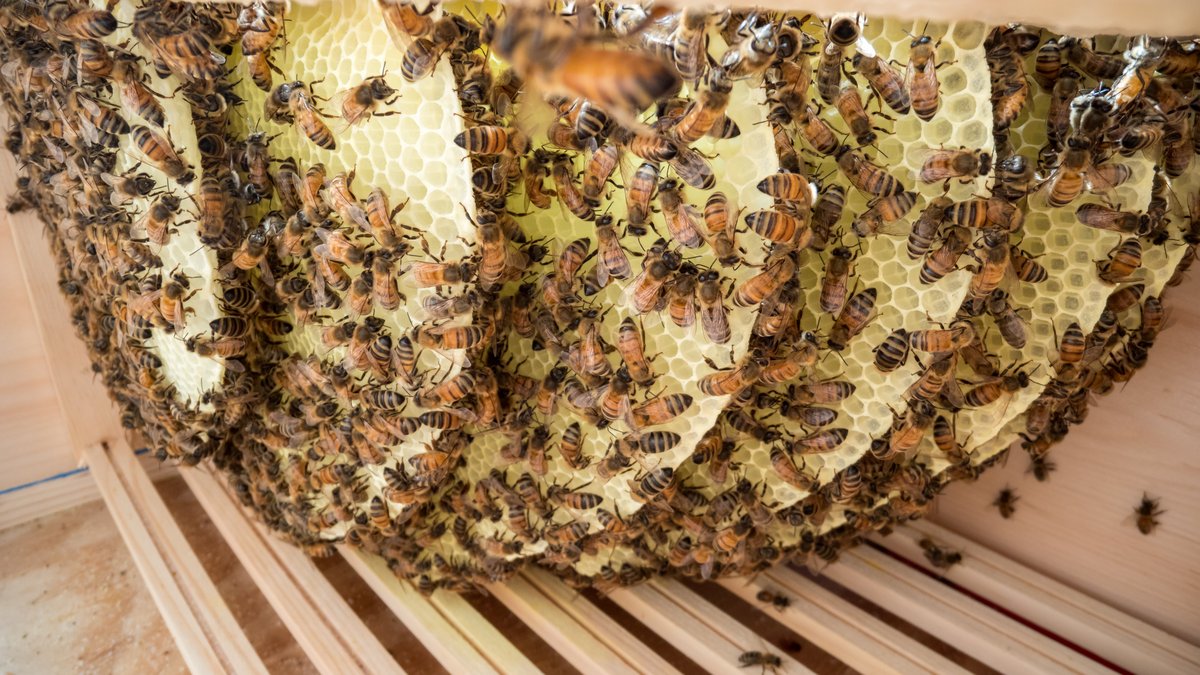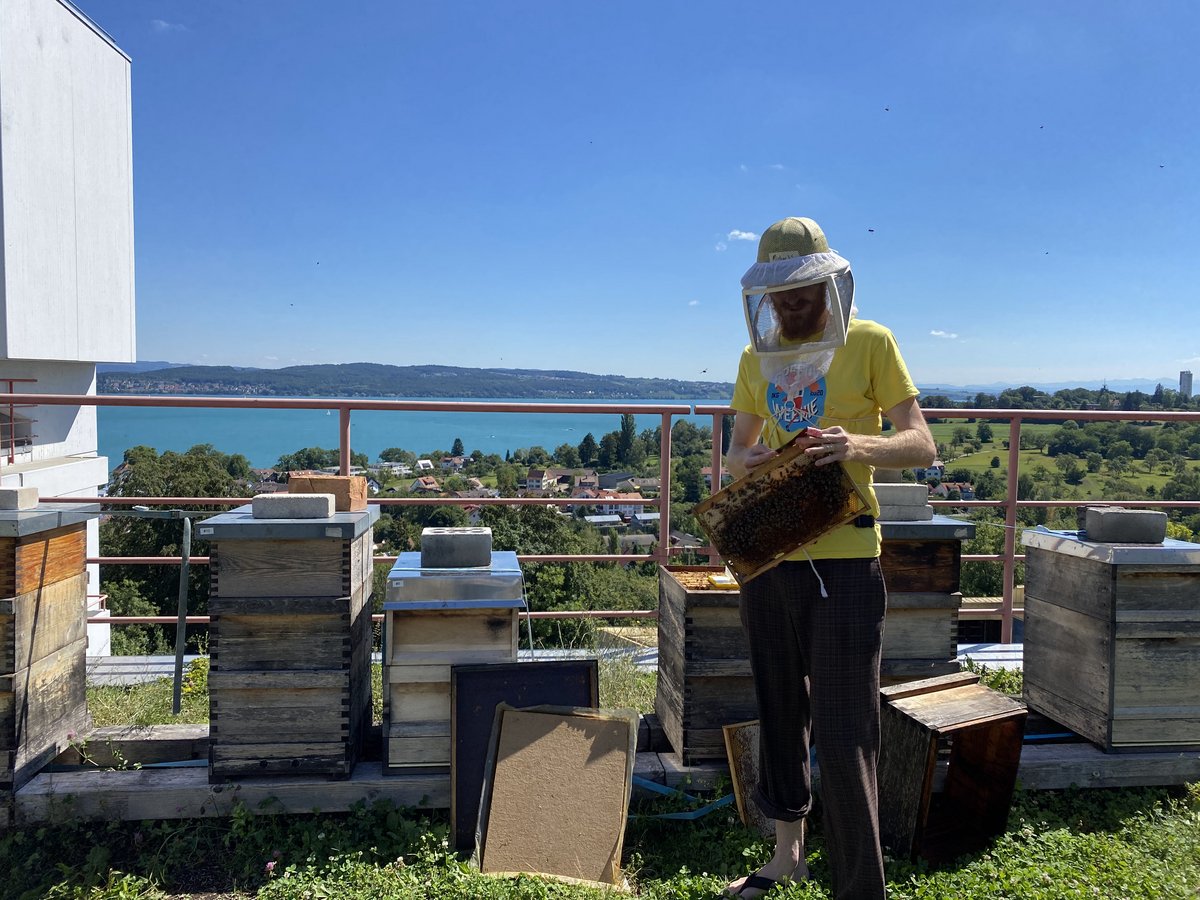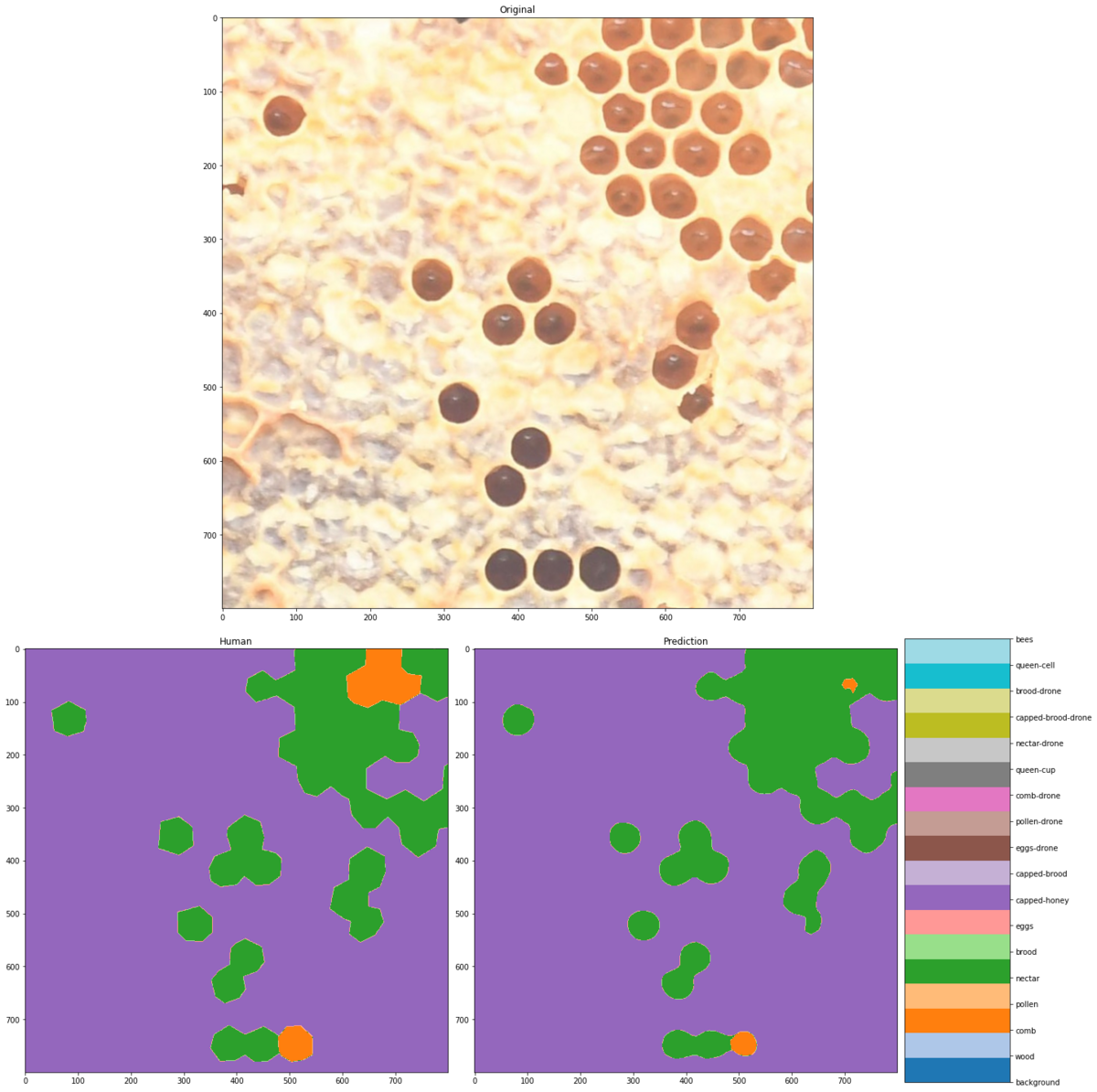
Copyright: Peter Marting
Mapping honeybee nests
How machine learning software can help
The ecological dominance of social insects is partly due to their ability to allocate tasks among nest mates. Task allocation is organized by age, but also spatially within the nest. Young bees perform brood care in the centre of the nest, middle-aged bees process honey at the periphery, and old bees exchange information at the entrance. However, these nest areas can change rapidly, for example during a nectar flow. Researchers must therefore regularly “map” the nest contents to determine which areas of the nest are being used for which purposes. To do this, Ben Koger and Michael Smith are designing a deep learning-based software that will automatically label the nest contents from images of honeybee combs. After the model has learned from images of manually labelled comb contents, the software will be able to classify each pixel based on this manual input and label it as part of the comb, pollen, nectar, eggs, larvae, etc. The researchers use methods from the field of biology to answer important questions about bee ecology, management and conservation, as well as computer science techniques for more efficient data collection. This allows them to pursue questions that were previously unsolvable.

Image: Michael Smith
Ben Koger about the general benefits of the study
What new research results have you already been able to generate through your approach?
We are using this to study the weekly comb building and nest use of eighteen honeybee nests at the University of Auburn in the United States. Michael Smith and I are both looking at how natural nests develop over time. We are observing how adaptable bees’ nest-building strategies are when they are forced to adapt to new physical conditions.
Have you ever thought about applying your results to other animals? For which other social insects would it also be suitable?
You can think of this as a kind of landscape mapping. This means that, beyond insects in particular, the most relevant other applications would be about quantifying space use in other environmental contexts. In the case of the bee comb, we are looking at the scale of comb cells that are less than a centimetre. But if you imagine how agricultural fields look from an airplane or a satellite, like different coloured grids, it is actually not so different. We could therefore actually use a very similar approach to automatically classify which crops are growing in different fields and see how humans allocate their space for different tasks throughout the year, just like we are doing with the bees.
How can beekeepers benefit from your research?
One thing we are quantifying is the natural progression of a healthy hive. Beyond that, when a hive is forced into a configuration that is not ideal, which aspects are the bees able to fix and recover from and which aspects are fixed and potentially going to lead to long-term negative effects. Once we understand this, it will be much easier for beekeepers to judge throughout the summer if their hives are progressing well, or if maybe something is going off track, and which measures they should be taking to correct things before it becomes a real problem. For instance, perhaps by shuffling the order of some of the frames in the nest, the beekeeper can shift the direction of development and re-establish healthy growth.
Would developing the software further as an app, e.g. for hobby researchers, be an option?
It would be. All you would need is a cell phone camera to take pictures of the comb and an internet connection to send the images to the cloud for processing. We will have to think about this.



